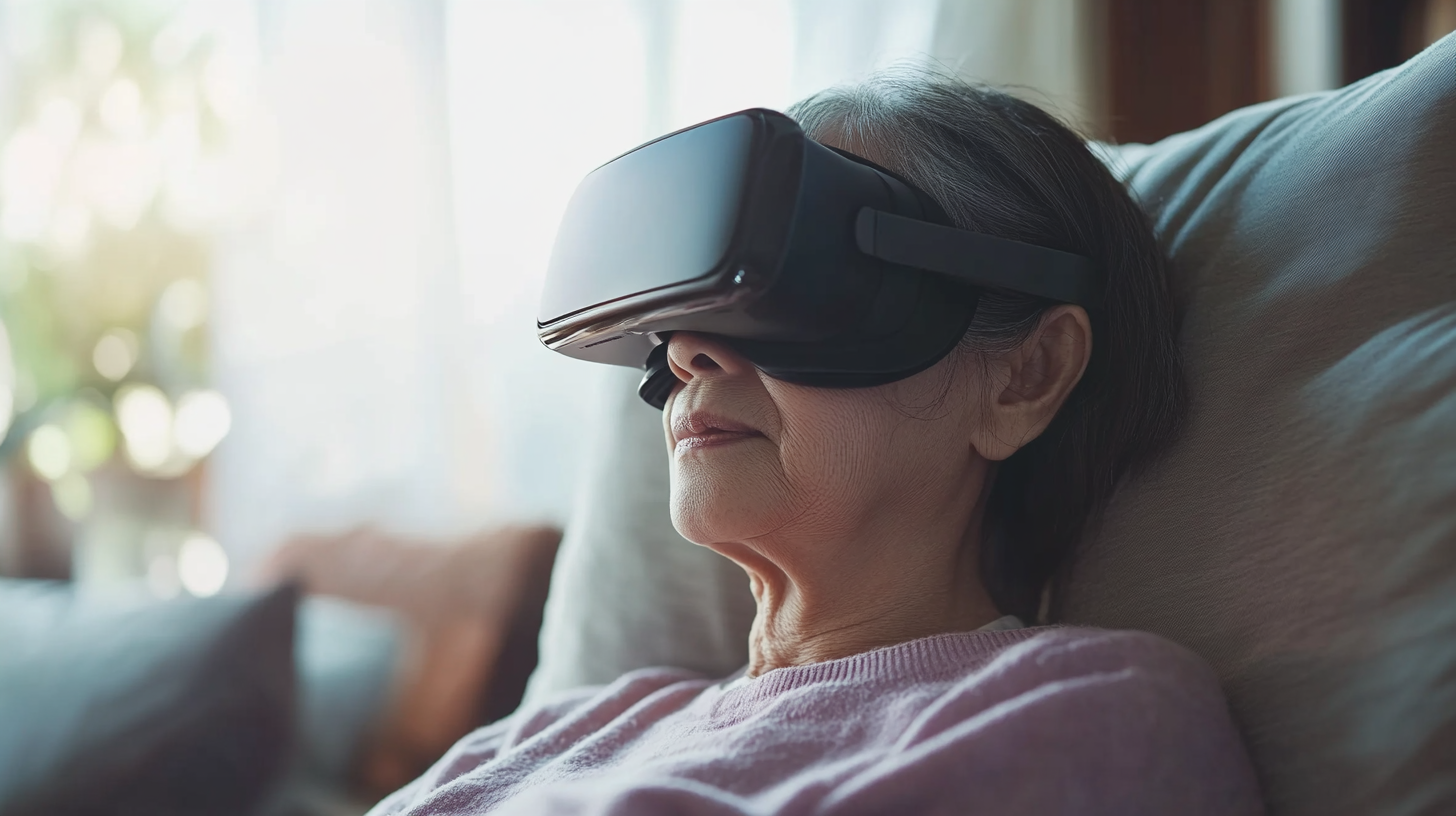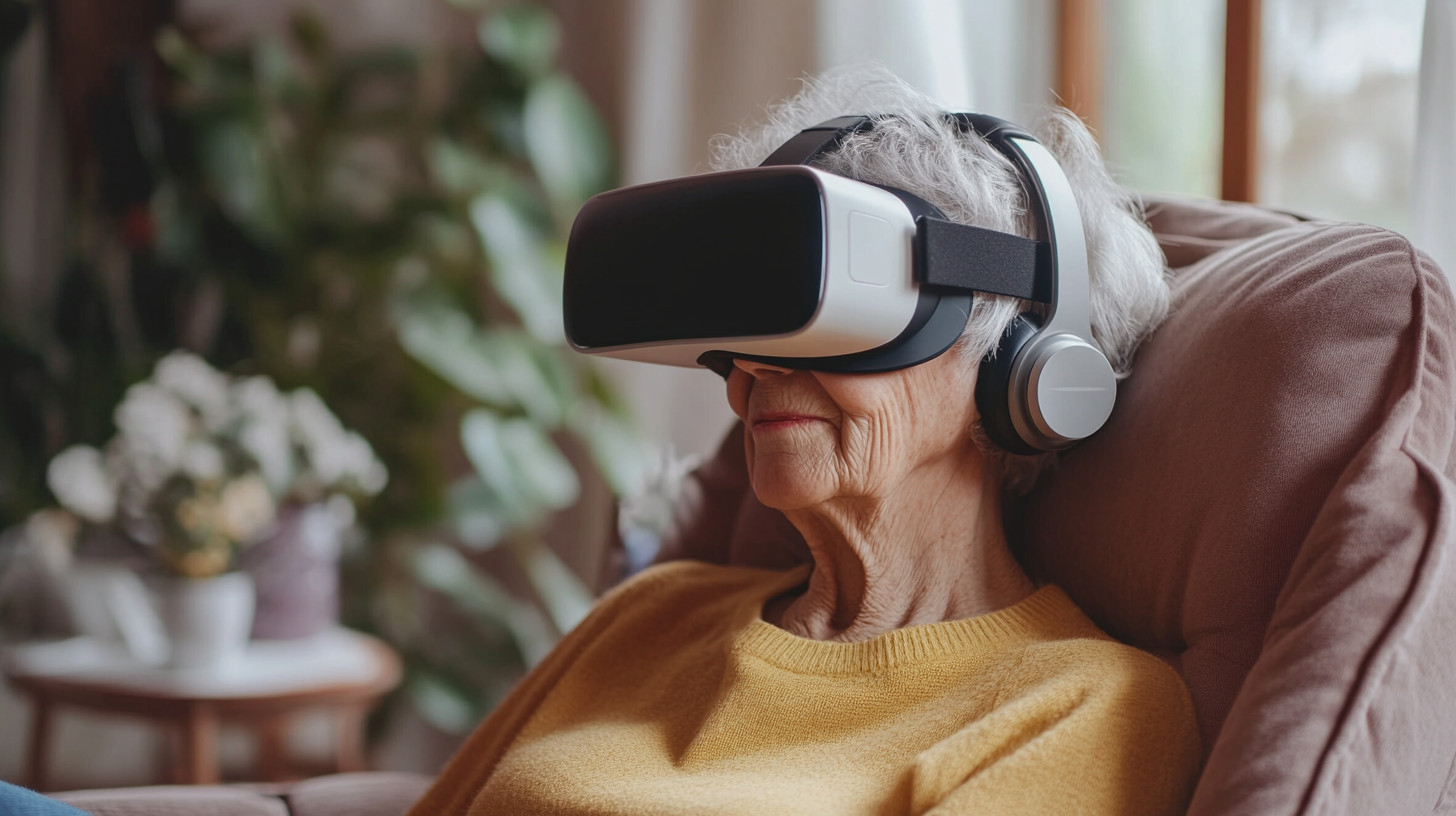Blog
Innovations Shaping Home Healthcare by 2025 and Strategies for Global Buyers
The healthcare landscape is fast-catching an advantageous nod for it–healthcare services at home. Telehealth Market, estimated by Grand View Research, is expected to label up to $636.38 billion by 2028, burgeoning at a CAGR of 38.2% between 2021 and 2028. Innovations in technology, including wearable health devices and remote monitoring tools, are significantly contributing to this shift, enabling patients to receive high-quality care in the comfort of their home. The exponential rise in the elderly population and the escalating costs of healthcare, underpinning an array of complicated puzzles, all the more accentuate the desirability of effective home healthcare solutions that will reshape the industry by 2025.
Looking to the future, an essential action of global buyers in this quickly changing home healthcare market would be to take the strategic paths that would enable them to steer the current and more vivid waves for a better part of the future. Key principles used to enhance patient outcomes and operation efficiency should be based on the integration of artificial intelligence, data analytics, and personalized care plans. The need for embedding technology into traditional care frameworks to bridge the disparities in health and make life better to everyone who needs those vital services is seen from WHO's perspective. Understanding and investing in this support system could help stakeholders be prepared to meet both patients' and healthcare providers' needs while providing an extended upper hand in such moving market scenarios.

Emerging Technologies Transforming Home Healthcare Services by 2025
The home health care sector is facing a lot of changes due to new technologies that are promised to increase the quality of care and better patient outcomes in the year 2025. One of these technologies, telehealth, allowed for remote consultations and continuous monitoring whereby the healthcare professionals could hold real-time communication with the patients. This thus empowered the patients to manage chronic ailments from their own homes, knowing that medical support was just a call away, thus minimizing emergency room visits or hospitalizations. AI and machine learning are set to take home healthcare services to another level. With the help of these technologies, personalized care plans for the patients will be developed through prediction of healthcare needs from the mining of enormous amounts of patient data and through the identification of potential health risks before they actually emerge. In addition, such AI-based applications can assist the caregivers with real-time insights and reminders for medication schedules to stay on track with treatment regimes for making the entire process of care more efficient. Wearables clearly mark the future of home healthcare as well. Advanced sensors are now monitoring vital signs, physical activity, and even falls, alerting caregivers and health providers. The proactive approach engendered by this technologically augmented integration into daily life will empower patients, especially the elderly, to maintain independence while ensuring prompt assistance gets to them whenever possible.

The Role of Telehealth in Enhancing Patient Monitoring and Support
Important functions of telehealth are becoming enhancing patient monitoring and support in a challenging and enabling environment of solutions across homecare. Very soon after, using advanced technologies, telehealth has begun being used by healthcare providers to create seamless links between patients and their care teams. Thus, inaccessible and asynchronous consultations will give way to real-time patient health monitoring and, thus, better outcomes.
These systems include a very powerful array of tools that enable the remote monitoring of some of the latest vital signs, administration of medications, and global health conditions perceived by professionals. This means personalized care delivery to patients, especially those with chronic diseases and mobility problems, in place of frequent visits to hospitals. Integrating such platforms with artificial intelligence and machine learning algorithms further allows them to analyze health data and offer personalized suggestions. Thus, patients are invited to be active in their healthcare processes, thereby raising their satisfaction and adherence to treatment plans.
Indeed, telemedicine is becoming an important bridge between patients and healthcare providers. By affording consultations without the actual patient and doctor being in the same room, it facilitates regular follow-up consultations as and when necessary to voice out any concerns regarding what have been previously discussed. Telehealth can, furthermore, be integrated with wearables to continuously monitor patients and report to caregivers before potential problems develop. In this way, not only will safety be guaranteed for patients, but it also eases the burden on healthcare facilities during peaks of increased demand. In this sense, by 2025, the changing face of telehealth will forever redefine home healthcare into a more efficient and responsive product offering to patients.

Trends in Wearable Devices and Their Impact on Home Health Management
The wearable device revolution in home health management has innovative things waiting to change the patient experience by 2025. These devices include smartwatches to fitness trackers and are quickly proving themselves to be invaluable tools in the hands of both patients and healthcare providers. Vital signs such as heart rates, blood pressure, and the amount of activity people engage in are continuously monitored and collected for analysis in real-time, opening up avenues for truly proactive care rather than reactive. This transformation not only makes it possible for patients to take responsibility for their health but also allows healthcare professionals to devise care regimes based on accurate real-time information.
Artificial intelligence and machine learning are now empowering wearable technology to do more than just collect data. It can also now analyze trends on the data it receives, make forecasts regarding possible health-related events in the future, and even remind its users to have a checkup when it critically considers that the time to do so is approaching. With all these innovations, as time goes by, the kinds of features highly anticipated to enrich the use of wearables include medication reminders, sleep tracking, and telemedicine placement-the last of which would be able to link patients to healthcare facilities without physical distances between them. They are relevant for those with chronic diseases, where an early diagnosis followed by close supervision can lead to better results.
As home healthcare solutions become investment opportunities for global buyers, so will increase the demand for budget-friendly, good-quality, and easy-to-understand wearable devices. Attractive features for consumers must be functional, comfortable, and interoperable. The benefits of technology will have a great future in home health management, especially with the advent of wearable devices that not only enhance patient engagement but also increase health results.

Key Strategies for Global Buyers in Adopting Innovative Healthcare Solutions
As healthcare continues to change, global buyers must realize the new solutions for improved home healthcare by 2025. Advanced digital technology assures progressive improvement in patient outcomes and operational efficiency. This necessitated a tactical approach to development on how health solutions are selected and adopted from now on-that such solutions are compliant with sustainability and quality measures.
One great option for global buyers is to adopt partnerships founded with technology providers leading the charge in innovations in healthcare. The most paramount advantage of this partnership is not just the speed so much more, but rather it also guarantees the healthcare buyer access to these innovative technologies and all the merits that makes them a standard to adopt these technology installations. The availability of such innovative transformations helps scope in the emergence of patient-engagement models for better processes and data management.
More so get to understand the regulatory environment, compliance requirements, and thus also going to effectuate this deployment within organizations. Solutions that suit global buyers in this regard are capable and adaptable to changing requirements while ensuring compliance with the regulations at different localities. The strategy will prepare the healthcare organizations to face the new reality of the marketplace, not only to survive but also to flourish while continuously driving improvements to healthcare quality and patient safety.
Addressing Regulatory Challenges in the Evolving Home Healthcare Landscape
The dynamics of home healthcare are currently at the regulatory challenges that require global buyers to formulate strategic plan to deal with them. The global home healthcare market is predicted to be worth $510 billion by 2025, growing at a CAGR of 7.9%, according to a recent report by Fortune Business Insights. This growth trajectory is full of opportunities but also emphasizes the complexity that one must navigate with respect to different regulatory environments across regions.
Regulatory compliance remains one of the most pressing challenges for home healthcare providers. It includes various laws around medical devices, telehealth services, and data security for patients. Take the recent campaigns of the FDA that aim to streamline the approval process for home-use diagnostic devices as an example. They are meant to foster more innovation and to ensure safety. Unfortunately, such regulations tend to vary tremendously among countries. Hence, international buyers must adapt to local laws. According to a study by McKinsey & Company, 60% of health executives consider regulatory compliance to be the number one challenge in affecting home healthcare operational efficiencies.
The increasing hybridisation of healthcare models, such as in-home services plus telemedicine, adds regulatory toughening. The World Health Organization lays it bare that increase in home healthcare translates into an equally proactive regulatory environment with which to deal with risks and incidents of remote monitoring and digital health solutions. The dual challenge is to ensure patient safety as uptake of novel care delivery models improves. Global buyers winning out in this dynamic environment must invest considerably in understanding those nuances in regulation and in building comprehensive strategies for compliance with national and international requirements.